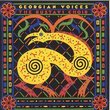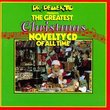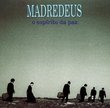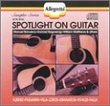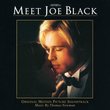| All Artists: Matthias Gascogne, Pierre de la Rue, Antoine de Fevin, Josquin Desprez, Pierre Moulu, Adrian Willaert, Gregorian Chant, Heinrich Isaac, Cornelis Rigo, Hans Neusidler, Nicolas Gombert, Marbrianus de Orto, Pierre Alamire, Capilla Flamenca, La Caccia Title: The A-La-Mi-Re Manuscripts - Flemish Polyphonic Treasures Members Wishing: 0 Total Copies: 0 Label: Naxos Release Date: 1/25/2000 Genres: Special Interest, Pop, Classical Styles: Vocal Pop, Opera & Classical Vocal, Chamber Music, Historical Periods, Classical (c.1770-1830), Early Music Number of Discs: 1 SwapaCD Credits: 1 UPC: 636943474426 |
Search - Matthias Gascogne, Pierre de la Rue, Antoine de Fevin :: The A-La-Mi-Re Manuscripts - Flemish Polyphonic Treasures
 | Matthias Gascogne, Pierre de la Rue, Antoine de Fevin The A-La-Mi-Re Manuscripts - Flemish Polyphonic Treasures Genres: Special Interest, Pop, Classical
What were these oddly named manuscripts? Hand-copied collections of music so beautifully calligraphed and illustrated that they were collected as art treasures by wealthy nobility and bankers, exchanged as gifts between h... more » |
Larger Image |
CD DetailsSynopsis
Amazon.com What were these oddly named manuscripts? Hand-copied collections of music so beautifully calligraphed and illustrated that they were collected as art treasures by wealthy nobility and bankers, exchanged as gifts between heads of state, and even used as diplomatic bribes of a sort. (Charles V gave several of them to key personages to secure his election as Holy Roman Emperor.) They were produced by the workshop of Petrus Alamire (né Imhoff), who took his nom de plume from solfège syllables (e.g., do re mi), and they're among the most important sources we have today for music from the period around 1500. Naxos has put together a fascinating sampler of music from some of Alamire's manuscripts: sacred music and elegant secular art songs by composers both known (Josquin, de la Rue) and almost forgotten (Marbianus de Orto), as well as a few pieces played on wonderfully raucous shawms and trombones--all performed by the exemplary Belgian ensemble Capilla Flamenca. This disc should be a treat for Renaissance collectors (even those who don't usually care for anthologies); at the super-budget price, it's a good introduction to Renaissance polyphony as well. --Matthew Westphal Similarly Requested CDs
|
CD ReviewsGreat recording, great music. Chris Massa | West Chester, PA | 04/29/2001 (5 out of 5 stars) "Without a doubt, early music is an acquired taste. Even though some will certainly gawk at the comparison, I find it very similar to music written in the 20th century. This similarity is not in how the music sounds, but rather how it needs to be listened to. If you purchase a CD of early music expecting to hear something that resembles Beethoven or Mozart, you are in for a real disappointment. If you want to hear something different, something that you don't hear very often, something that is beautiful in a decidedly different way, then maybe early music is right for you.That being said, I must say that I love early music, just as I love new music. For anybody who already has a good collection of early works, this release, "The A-La-Mi-Re Manuscripts," is a superb choice. It is gorgeous music that is performed brilliantly and is recorded marvelously, revealing a full and rich tone. Or, if you are just starting to get your feet wet with early music, this is still a fantastic release to purchase, for the reasons mentioned above, as well as another one. The price. Don't let it fool you. This is great music that is as good as, if not better than, any comparable release at a much greater price. And if you purchase it and decide you don't like it,you're...(not out much money). But let me go on record saying that I doubt you'll ever regret purchasing this disc. It is a truly wonderful release that raises the bar for early music recordings, regardless of the price tag." Sensitive, Compelling, and Outstandingly Rendered! dw | Bloomington, IN | 02/21/2005 (5 out of 5 stars) "I picked this CD up simply to round out an order, not thinking that it would be anything special. I was very wrong. This is one of the best Early Music CD's I own. Capilla Flamenca does an outstanding job of reproducing this early Franco-Flemish repertoire. There are some gems on this CD that you will find nowhere else. From polyphonic mass settings to lively Renaissance dance bands, this CD covers the era with grace. I would recommend it to anyone and everyone." Flemish Fire! Giordano Bruno | Wherever I am, I am. | 08/27/2008 (5 out of 5 stars) "Early Music programs are a lot like fine wines; single vintage bottlings are the fashion, but sometimes blends are easier on the palette. Likewise, most high-end recordings of Renaissance and Baroque tend to be "complete" works by a single composer. That works well enough for Baroque oratorios, but Renaissance music comes in smaller packages - motets, villancicos, carmina, usually no more tha four to six minutes long. I know from hard experience that a concert program of 15 similar motets, however finely performed, will be hard to sell.
Capilla Flamenca has taken another option, a blended program of vocal works by different composers spiced with instrumental fantasies of the same era. The risk of such a concert program is lack of focus and unity, but Capilla Flamenca has answered that challenge by the neat device of centering their program around Petrus Alamire, one of the great calligrapher and manuscript illuminators of the 16th Century, whose work was avidly collected by Charles V and Margarite of Austria. The name "Alamire" is a musical jest, A for the tonic note, la, mi, and re for the intervals of the scale. The man's real name was Imhofe. Composers represented on this CD include Josquin Desprez, Pierre de la Rue, Heinrich Isaac, Jean Mouton, Adrian Willaert, and Anon -- all the greats of the Flemish musical mafia which conquered all of Europe in the 15th and 16th Centuries. Instrumental works are performed on "alta capella" shawms and trombones, solo lute, and "bassa capella" viola da gamba consort. In this context, 'alta' means loud, 'bassa' means soft. 'Flamenco' means Flemish, by the way; the Flemish influence on Spanish music of the Renaissance was the starting point for the later Spanish popular music we now call flamenco. I found this CD on a shelf in my apartment in Rome. I must have bought it five or six years ago, and never got around to listening to it until now. What a stunning surprise! This relatively unknown ensemble of young Belgians can really sing, and sing this repertoire as proudly as if it were their national heritage, which it is. The instrumentalists are all part of an ensemble called La Caccia, also Belgian judging by their names. Their bright tones are as effective as ginger for cleansing the musical palette between sips of oak-barrel aged vocal polyphony. " |

 Track Listings (17) - Disc #1
Track Listings (17) - Disc #1


